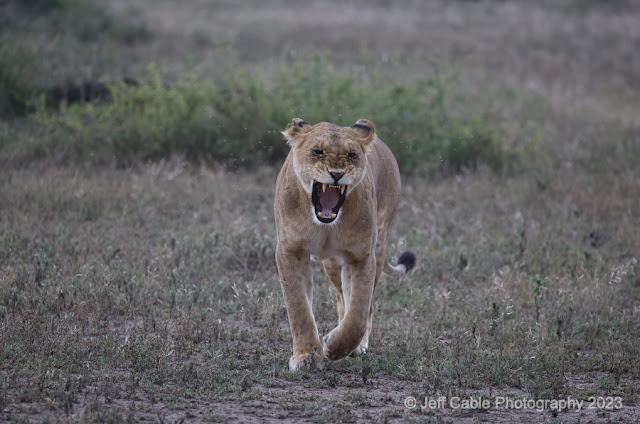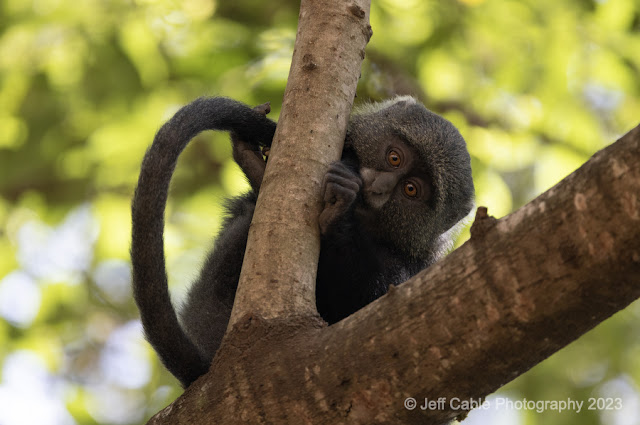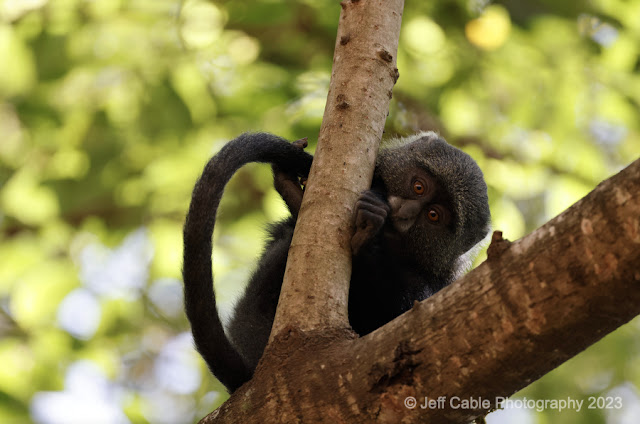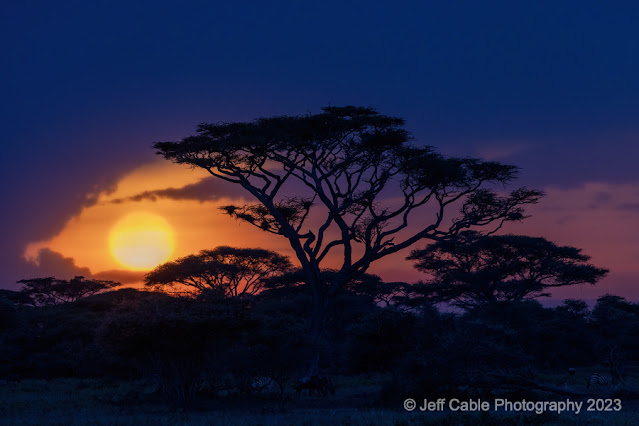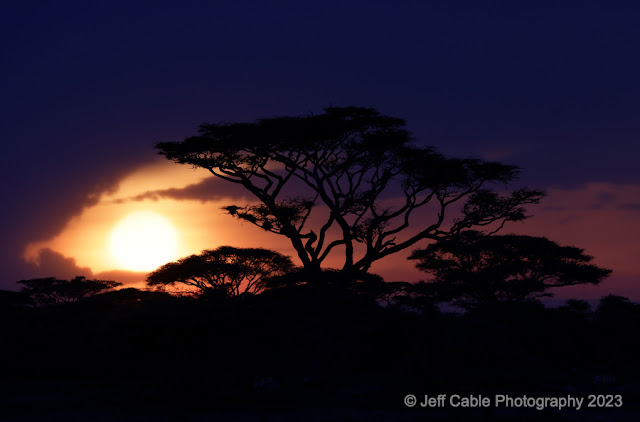On our recent safari in Tanzania, we were treated to many lion sitings. It is not uncommon to see these majestic cats in the wild, but the real treat was to see them in so many different situations.
One of our first lion sitings occurred when we were in the Ngorongoro crater, but they were pretty far from us and you can not drive off-road in the crater to closer. The same day that we left the crater, we drove to my favorite area of Tanzania, an area called Ndutu. In this area, we can drive off-road. This means that if we see a lion in a tree, we can drive right to the tree to get a nice photo. Within minutes of entering Ndutu we saw this lioness resting up in a tree. Our photo tour guests were really excited to get photos of her as she moved from branch to branch.
Also in Ndutu, we watched as some of the lions stopped for a drink. The one above appears to be pregnant, or possibly just have a very full belly.
Here is another female drinking.
My goal is to get our vehicles in the best position to photograph the wildlife. We saw this one lioness walking in our direction. Our guide quickly moved so that we could get a nice photo of her with sunlight on her and the tall grass in the background.
The same lioness that you saw walking in the previous photo decided to plop down and take a rest very near our vehicle. I wanted to get a photo from a low angle, so I used the reciprocating screen of the
Canon R5 (with the
Canon RF100-500mm lens mounted to the camera) to lower the camera outside of the vehicle as low to the ground as I could and fire off some shots a couple of feet off the ground.
In the same pride of lions, there was this one male...
The female was not very happy with the male! I was really happy to capture the emotion in the female, but did not expect the male to jump out of the frame. Arghhhh! This would have been so much better if we saw the whole male.
If you have been on safari before, you may know that there is a whole ritual with the mating process. I told all of our guests what to expect and we all had fun capturing the interactions between the male and females. At this particular moment, I think the female startled the male.
And in this shot, I think the second female startled the first female.
They were likely fighting for dominance.
The mating process is always interesting. The entire process happens in about 20 seconds, and it is repeated about every 20 minutes, sometimes for as long as a week. The male lion almost always looks angry and the female typically looks bored. Many times after completion, the female will snap back at the male before turning over on her back. She turns onto her back to help the fertilization process (since the lioness' fallopian tubes are curved).
Towards the end of one of our days, we came across the partial remains of a wildebeest, and heard that a lioness was close by. At one point she popped our of the bushes and I grabbed this photo of her perfectly framed in the brush. I love the way that her golden body is in contrast to the dark background.
She started walking away and our guide made another mad dash for a "straight-on' position. He guessed perfectly and we had a shot of her coming right at us. As she walked towards us, she gave us this big yawn. We loved that!
The following morning we were driving along the waters edge when we spotted this large male lion who was resting by the water. I encouraged our guests to shoot an image of the lion, but to take it wide enough to show all the zebra on high alert in the background. This shows the way that the animals coexist in the wild. (Almost everyone on our trip was using a
Canon R5 or
Canon R6 with the
Canon RF100-500mm lens. This lens is great because, with the same lens, you can shoot tight or wide). They either owned the gear or borrowed it from my contacts at Canon CPS (for free I should add).
Towards the end of our trip, we were driving in the Serengeti when our guide saw these two male brothers hiding under a small tree. We waited for about 20 minutes to see if they would move.
Waiting while on safari is a very good thing. Not only do things change in an instant, but it also gives us a good chance to capture portraits like this one.
Both of the brothers got up and started walking towards the copis (rock outcroppings). Figuring that they were heading towards the rocks, we moved our vehicle to follow their path. I loved this scene, with the big male lion surrounded by the endless tall grass of the Serengeti.
Once the large male made it to the rock area, he turned around to check out our vehicles. I love this shot with the curve of the tail and the interesting background.
Just before walking behind the rocks and mostly out of sight, he turned and looked right at us. Many people ask me if I am ever scared while on safari and the answer is always "no". These big cats, although incredibly powerful and dangerous, do not see us as food. They are accustomed to the safari vehicles and usually use the shade of the vehicle to cool down. Would I get out of the vehicle? No way! But we always feel safe and love getting great photos of these big cats.
By the way, I just added a bunch of new photo tours to my web site. These include future trips to Africa, Greece, Indochina, Costa Rica... You can find those here.
__________________________________________________________________________
Subscribe to the Jeff Cable Photography Blog by clicking HERE!
__________________________________________________________________________
If you are interested in purchasing ANY equipment, please click here to go to B&H Photo, as I get a referral from them if you enter this way. It does not change the cost to you in any way, but it helps me keep this blog up and running.
__________________________________________________________________________
Check out my upcoming photo tours to amazing places around the world. I have photo tours to Africa, Costa Rica, Cuba, Europe, Asia, India and more. And Canon will loan you any gear you want for FREE for any of my tours.
__________________________________________________________________________



































